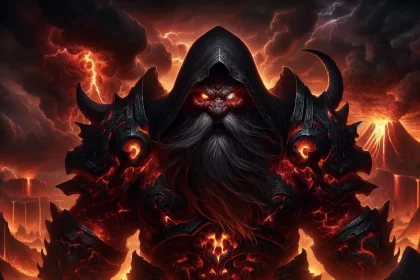In the realm of tabletop wargaming, discussions around the game mechanics of Kings of War often become heated, particularly around how units with melee values of 4 are seen as highly unpredictable, or “swingy.” This term highlights the significant fluctuation in combat results, primarily due to the randomness of needing to roll a 4 or higher on dice to land hits. This level of uncertainty stands in stark contrast to units that require a 3+ to hit, which are generally viewed as more dependable and predictable. Is common wisdom accurate? Are units that hit on a 4+ truly swingier than others?

Analysis
To explore this concept further, I conducted an extensive analysis by simulating 10,000 battles using units with various melee values (2, 3, 4, and 5) against a hypothetical Def 4, 13/15 unit. This experiment aimed to measure the variability in combat effectiveness, particularly focusing on how often these units could potentially rout the opposing unit. Through this rigorous testing, including calculating the effectiveness of attacks and the subsequent impact on enemy units, I sought to provide a clearer understanding of the strategic implications of these “swingy” combat outcomes in Kings of War.
The resulting data painted a clear picture:
| Melee Value | Mean Hits | Stdev Hits | Min-Max Hits | Coefficient of Variation | % Chance of Routing |
|---|---|---|---|---|---|
| 2 | 15.0 | 1.6 | 8-18 | 0.11 | 78.0% |
| 3 | 12.0 | 2.0 | 4-18 | 0.17 | 56.4% |
| 4 | 9.0 | 2.1 | 2-16 | 0.24 | 32.5% |
| 5 | 6.0 | 2.0 | 0-14 | 0.34 | 12.9% |
The concept of “swinginess” in combat outcomes is effectively illustrated by the Coefficient of Variation, which is a statistical measure used to determine the degree of variability relative to the mean of a dataset. Essentially, CV is calculated by dividing the standard deviation by the mean. This ratio provides a normalized measure of dispersion of a probability distribution, making it particularly useful for comparing the variability of units with different melee values in Kings of War. Units hitting on 4s have a higher CV compared to those hitting on 3s, which indicates they have a greater level of unpredictability and less consistency in achieving hits. The reason CV is favored over just standard deviation in this context is because it allows for a comparison of variability across datasets that might have different means, offering a clearer picture of relative variability, which is crucial when assessing the “swinginess” of different units’ performance.
As you can see from the table, the worse a unit’s melee value, the higher its CV (though note that stdev don’t show as much variability). In other words, the worse a unit’s chances of hitting, the greater the CV (and hence “swinginess”) of its results. This is a situation where the common wisdom is borne out.

Strategic Implications and the Blade of Sharpness
One noteworthy strategy involves the Blade of Sharpness, which improves a unit’s melee value by 1. This upgrade, while costly in points, can significantly enhance a unit’s effectiveness. For instance, improving a unit’s melee value from hitting on 5s to 4s more than doubles its chances of routing an opponent, showcasing the potential value of this upgrade in competitive play. In particular, note that you get more consistent bang for your buck by putting the blade on units with worse melee values. E.g. a unit hitting on 5s improves from 6 to 9 (50%) by adding the blade, but improving from 3+ to 2+ is only a 25% increase in average damage output.
Conclusion
This exploration into the mechanics of Kings of War not only confirms the community’s perceptions but also sheds light on the strategic considerations players must weigh when assembling their forces. Such insights highlight the depth of strategy that makes Kings of War a continuously engaging and challenging game.
Have other data questions you’d like me to explore? Let me know, and I’ll see what I can do!







